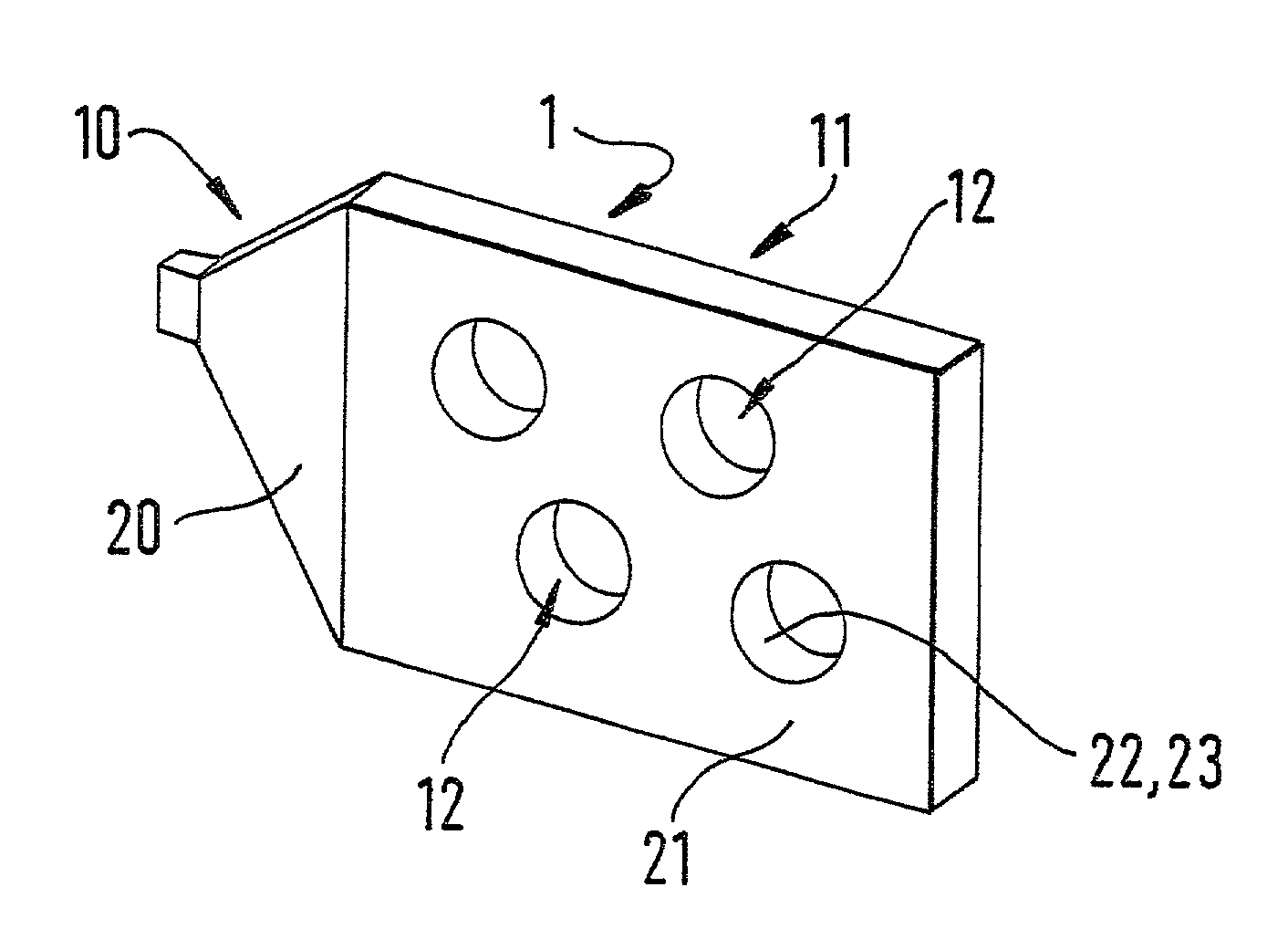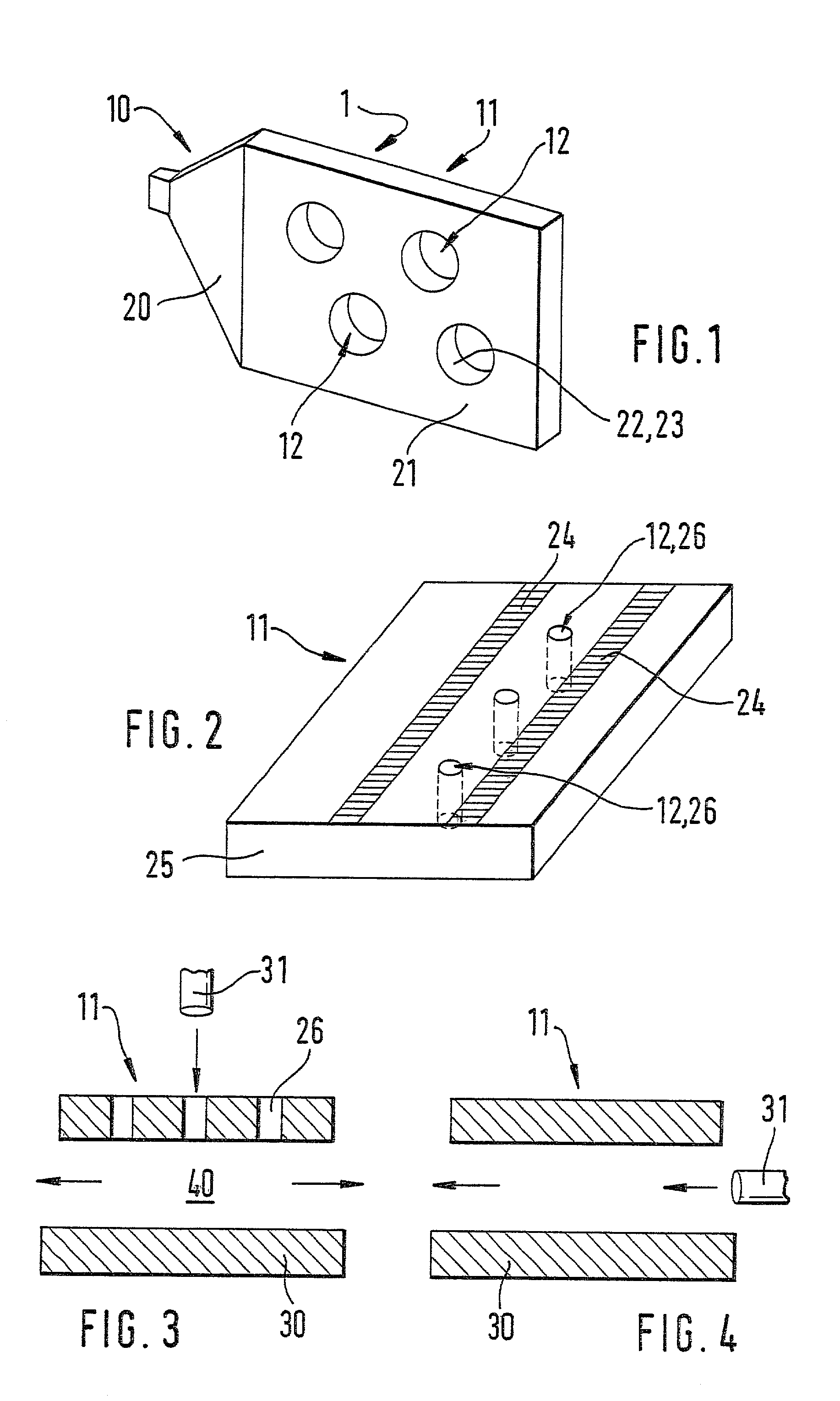Device and method for generating a local by micro-structure electrode dis-charges with microwaves
a micro-structure electrode and microwave technology, applied in plasma techniques, gas-filled discharge tubes, energy-based chemical/physical/physico-chemical processes, etc., can solve the problem that high-frequency or microwave excitations have not been implemented under known methods
- Summary
- Abstract
- Description
- Claims
- Application Information
AI Technical Summary
Benefits of technology
Problems solved by technology
Method used
Image
Examples
Embodiment Construction
[0025]FIG. 1 illustrates a device 1 having a launching structure 10, a guide structure 11, and plama regions 12. In this case, launching structure 10 has the shape of a horn 20, as is generally known from microwave technology, and is used for launching microwaves into guide structure 11. The microwaves are generated by a generally known microwave generator (not shown) which is linked to launching structure 10. Horn 20 passes electroconductively over into guide structure 11, enabling microwaves to be launched by microwave generator via launching structure 10 into guide structure 11.
[0026]In this example, guide structure 11 is designed as waveguide 21 of a metal, such as copper, high-grade steel, gold or silver, which is filled on the inside, for example, with silicon dioxide as rigid, puncture-proof, low-loss dielectric material 22. Waveguide 21 has a thickness of up to a few mm. Its length is variable, but should amount to one fourth of the wavelength of the injected microwaves. Its...
PUM
| Property | Measurement | Unit |
|---|---|---|
| distance | aaaaa | aaaaa |
| frequency | aaaaa | aaaaa |
| frequency | aaaaa | aaaaa |
Abstract
Description
Claims
Application Information
 Login to View More
Login to View More - R&D
- Intellectual Property
- Life Sciences
- Materials
- Tech Scout
- Unparalleled Data Quality
- Higher Quality Content
- 60% Fewer Hallucinations
Browse by: Latest US Patents, China's latest patents, Technical Efficacy Thesaurus, Application Domain, Technology Topic, Popular Technical Reports.
© 2025 PatSnap. All rights reserved.Legal|Privacy policy|Modern Slavery Act Transparency Statement|Sitemap|About US| Contact US: help@patsnap.com


